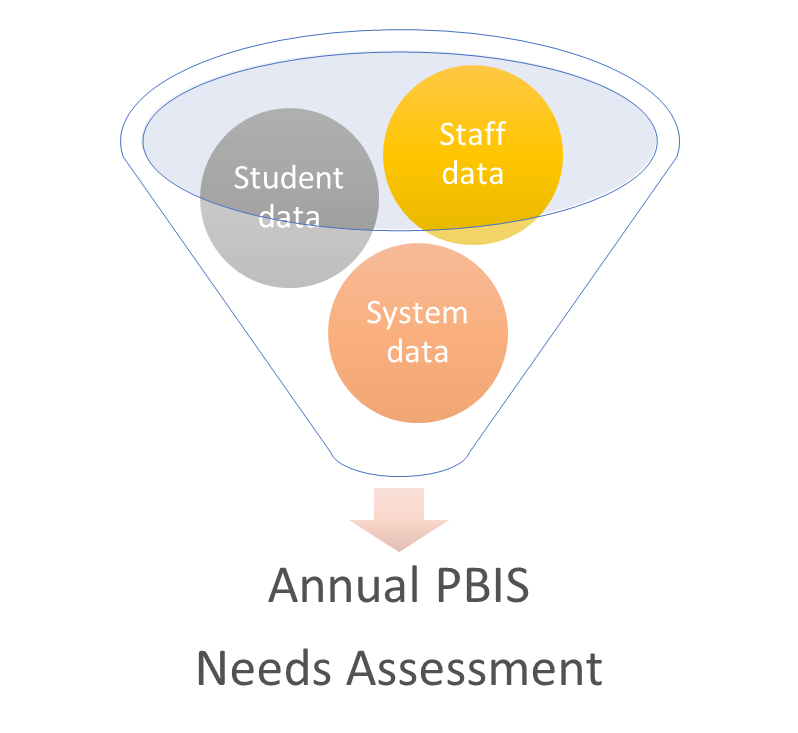Welcome
This website offers free resources for school leaders to engage their school community in schoolwide positive behavior intervention and support (PBIS). Online surveys for school staff and students are provided to engage school communities in the process of planning, implementing and evaluating PBIS.
These research-based surveys help your team empower and engage both student and staff voice. By understanding and amplifying the voices of the diverse communities in your school, you are better poised to attain equitable discipline practices and an inclusive, positive school environment.
We offer a free online survey for school staff, the Staff Perceptions of Behavior and Discipline
(SPBD) and two surveys for students, the Student Perception of Behavior and Discipline
(StPBD) and the Mini-StPBD, a brief survey that assesses student perceptions of PBIS practices
in the school.
Request the surveys here.
Our surveys are research-validated and have been refined over time. Here are a few pieces of evidence:
Feuerborn, L., Tyre, A., & Zečević, M. (2019). Factor validation of the Staff Perceptions of
Behavior and Discipline (SPBD) survey. Remedial & Special Education, 40, 32-39.
Feuerborn, L., Tyre, A., & King, J. (2015). The Staff Perceptions of Behavior and Discipline
(SPBD) Survey: A tool to help achieve systemic change through schoolwide positive
behavior supports. Journal of Positive Behavior Interventions, 17, 116-126.
For more of our peer-reviewed research, visit resources & support
Schoolwide Positive Behavior Intervention and Supports
Schoolwide Positive Behavior Intervention and Support is a whole school framework in which educators teach and acknowledge common behavioral expectations and consistently respond to unexpected student behavior. Decades of research support positive outcomes of schoolwide PBIS. For more information on PBIS, we recommend visiting pbis.org
The Importance of Staff and Student Support in PBIS Schools
Building-wide implementation of schoolwide PBIS cannot be fully achieved without the support of everyone—staff, students, and families. Indeed, a school has only changed when each member of the community has changed by adopting new practices or behaviors. If schoolwide PBIS is viewed favorably in the school community, educators are more apt to implement, and students are more likely to benefit. If educators disagree or there are too many barriers, they are less likely to implement. Over a decade of research supports the need to engage community in schoolwide PBIS (e.g., Bambara, Nonnemacher, & Kern, 2009; Feuerborn & Tyre, 2015; Kincaid et al., 2007; Lohrmann, Forman, Martin, & Palmieri, 2008).
Engaging the School Community in PBIS Needs Assessment
Data-based decision making is a key feature of PBIS. In PBIS schools, it is typical to conduct an annual systemic needs assessment to understand the level of implementation of the features of schoolwide PBIS (e.g. TFI or SET). Despite the reality that lack of support is a barrier to PBIS implementation, PBIS schools typically fail to engage all staff and students in needs assessments. Engaging staff and older students in schoolwide PBIS annual needs assessments offers opportunities for meaningful involvement in the school change process. With their engagement in the process from initial discussions through implementation, their support for the change effort is fostered.

Survey-Based Resources for Engaging School Communities
Through this website, school leaders can access free, online research- based surveys that help schoolwide planning teams engage the whole school community as they plan for, develop, and refine schoolwide PBIS practices in their schools. Surveys for staff and students are administered online via a survey link at the whole school level and survey responses are automatically compiled into a school-level report. This report contains basic statistics, a summary of potential facilitators and barriers to quality implementation, and basic recommendations for your school.

